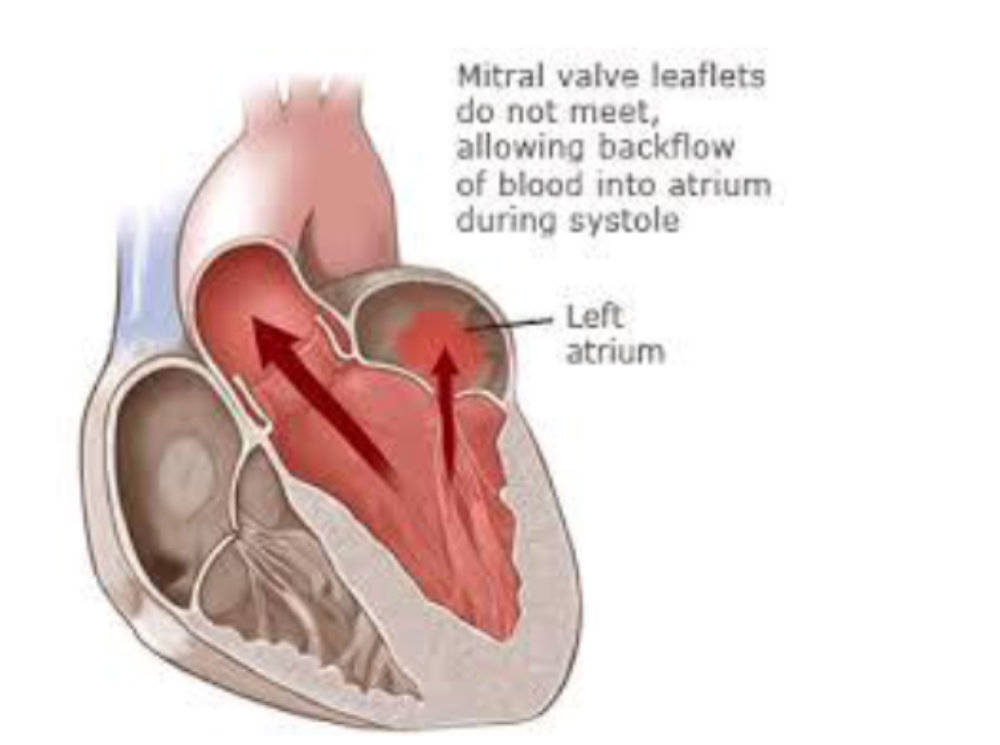Heart disease in dogs (mitral valve insufficiency)
How does the heart work?
The heart is divided into 4 chambers. The top two chambers are called atria (singular: atrium) and the bottom two chambers are called ventricles. Blood is carried back from the body into the right atrium and then into the right ventricle. The right ventricle pumps blood to the lungs where oxygen enters the bloodstream. The blood then returns to the heart and enters the left atrium, and goes into the left ventricle where it is then pumped to the rest of the body. There is a major valve between the atria and ventricles on either side of the heart- the mitral valve on the left and tricuspid valve on the right, which prevent the backflow of blood.


What is degenerative valve disease? What is a heart murmur?
Degenerative valve disease or more commonly termed “heart disease” refers to the weakening of the heart valves. This usually affects the mitral valve first. It starts as a small leak from the ventricles back into the atrium and is picked up as a heart murmur during the routine wellness examination. Sometimes the valve can become abnormally thickened and hence it becomes unable to form a tight seal to prevent blood from flowing back into the atrium when the ventricle contracts to pump blood to the rest of the body.
My pet has a heart murmur, what does it mean?
If a heart murmur has been picked up in your dog during a health examination, it does not equate to impending heart failure. Over time the leak between the valves will become more severe and the heart can no longer pump blood as efficiently around the body. It may take a few months up to several years for the signs of clinical heart failure to emerge, and can be managed with medication.
What tests are recommended for further investigation?
We typically recommend chest radiographs to look for heart enlargement, and an ultrasound examination of the heart (echocardiogram) to determine the structure of the valves as well as the size of the leak between the valve leaflets.
What medications will my pet be started on?
Depending on the results of the recommended tests, we will start your pet on different drugs. If your pet is in the preclinical stage, we will start your pet on a medication called pimobendan, which has been shown to delay the onset of clinical signs of heart failure.
What should I look out for at home?
One way you can monitor your pet’s heart condition is by counting the sleeping respiratory rate (SRR). This is done by counting the number of breaths your pet takes while asleep, normally this should be below 30 breaths/minute. The Cardalis app (available now on Apple and Android devices) can assist with counting the SRR. The results can be emailed to us at vets@tuggeranongvet.com.au to help your vet track how your pet is responding to the medication.
Other signs of congestive heart failure include:
- Laboured or rapid breathing
- Increased coughing
- Anorexia
- Restlessness
- Abdominal distension
- Sudden collapse
If you notice any of these signs, or if your pet’s SRR exceeds 30 breaths/minute please contact us immediately.

